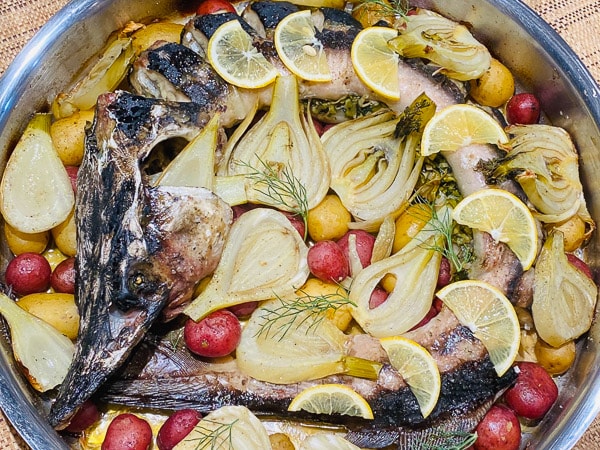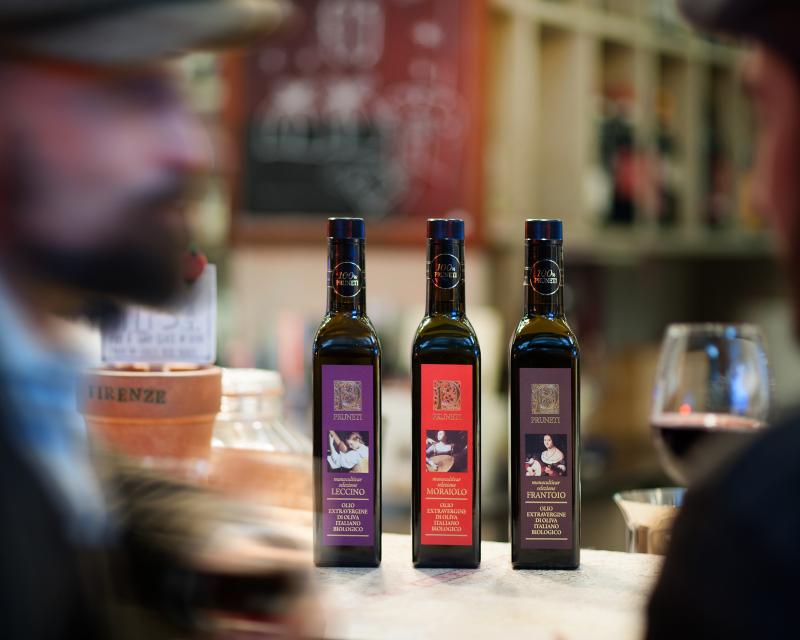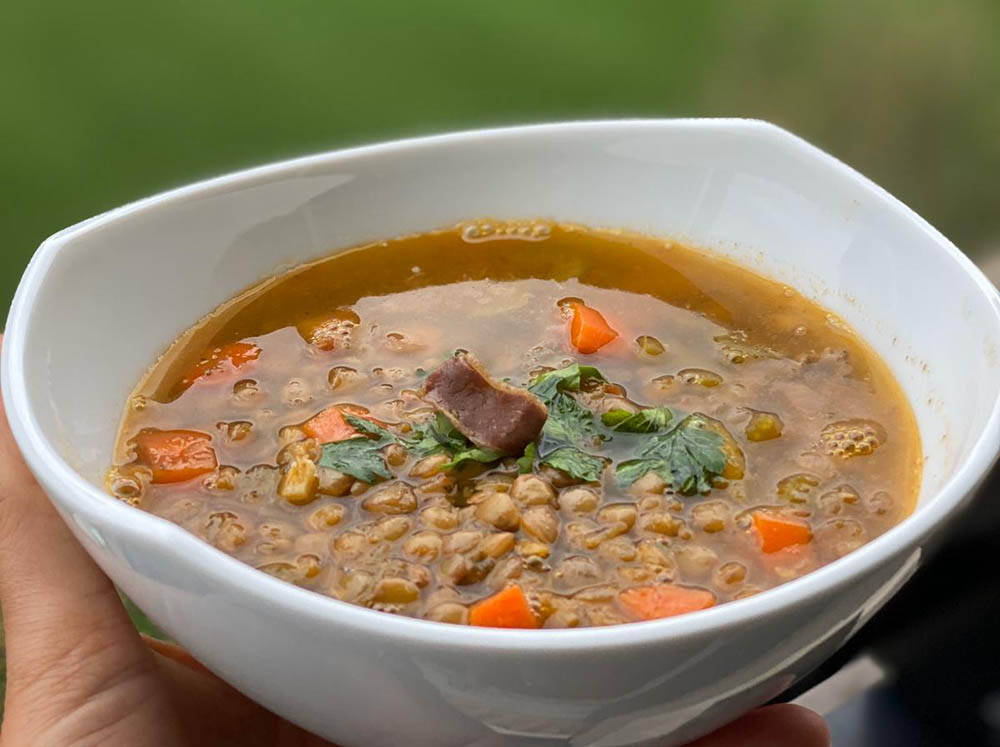Best Kosher Recipes for Rosh Hashanah Celebrations
What does Rosh Hashanah mean to you? This Jewish holiday marks the anniversary of the creation of the universe, the beginning of a new year, and a warm family get-together after the prayer service.
That is why Rosh Hashanah is certainly one of the most anticipated celebrations. It reminds of the value of life, gives hope for a change to the better, and unites people. No matter what you prefer to compare life with, a circle or a spiral, and even if you don’t really care about all this geometry, Rosh Hashanah still may and will signify a brand-new stage of your life, where you can improve what you have and to realize what you’ve been dreaming of.
Traditionally, Rosh Hashanah falls on Tishrei 1 and 2 – the first two days of the first month in the Hebrew calendar. The celebration begins at sundown of Tishrei 1 and lasts till nightfall of Tishrei 2.
In 2018 Jews all around the world will start observing the holiday in the evening of Sunday, September 9. This year Rosh Hashanah will finish in the evening of Tuesday, September 11, heralding the continuation of the Jewish High Holidays.
So, if you are already arranging the celebrations and thinking of presents for your dearest and nearest, let Marky’s help you with planning the festive menu.
Rosh Hashanah Dinner Essentials
Start the traditional holiday dinner with eating challah bread and sliced apples, dipped in honey. The round challah symbolizes a new life cycle. The apple with its symbolic meaning, which comes from the famous Bible story about Adam and Eve, serves as a reminder of Jewish people’s love for G-d. And honey means the wish to live a new year sweetly and smoothly.
The dinner on the second night should feature “new fruit” that a family hasn’t tasted yet. The pomegranate is a traditional choice, symbolizing the family’s happiness and well-being in the coming year.
The main course of the Rosh Hashanah menu is surely a head of a kosher fish or a ram. Serving it implies that the family is going to stand at the head and handle their destiny all year long.
And the finishing touch of the holiday dinner must be as sweet as delicious as a honey cake or an apple charlotte.
These dishes add to the cozy and safe atmosphere for which we like Rosh Hashanah so much. You may even put them first on the list of the holiday preparations. But it’s a new year coming and bringing new flavors with it. So, what about including something original into your menu?
Heat up Your Guests’ Appetite with These Starters
Right after you sweeten the celebration with apples and honey, it will be a good idea to try a few more piquant appetizers. Let’s begin with figs, stuffed with goat cheese. 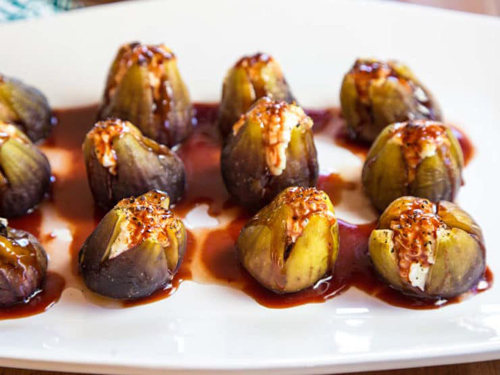
You’ll need up to 20 fresh figs, 4-5 oz. of fresh goat cheese, 1/4 cup of honey, 1 tsp. olive oil, salt and ground black pepper (add them to taste).
Here are some directions:
- While the oven is heating up, trim off figs stems and cut an “X” in the top of each fruit, about 1/3 way through it. Place the fruits on the parchment, greased in oil in advance.
- Place the cheese in a piping bag, massage and warm it with your hands. Then pipe the cheese into each fig, dividing it evenly.
- Brush the fruits with the oil and sprinkle them with salt and pepper.
- Broil the figs in the oven for 4-5 minutes, until you see the cheesy tips get brownish.
- Warm the honey, but make sure it’s not hot.
- Remove the fruits from the oven, pour them with the honey, and serve.
By the way, throughout the religious scriptures the fig is interpreted as a symbol of prosperity and security. So, it will be a nice flavorful morsel to serve for your holiday dinner.
Or you can opt for this spicy smoked salmon crudo. (No, “crudo” not just seems to mean “raw,” it really does. But the fish you serve should be smoked, not raw.)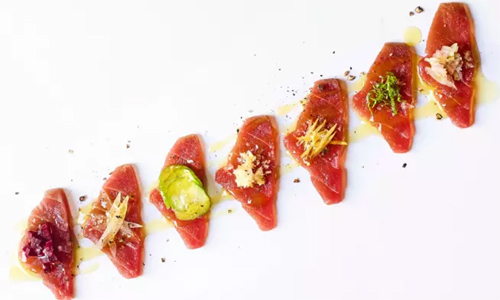
Slice as much smoked salmon as you consider enough to enjoy and arrange the slices on the plate. Drizzle the fish with olive oil and sea salt. Then garnish each slice with anything you prefer:
- lemon zest
- sliced cucumber
- grated raw beets
- diced shallots
- grated horseradish
- or your favorite spices.
Enjoy!
A Soup on the Rosh Hashanah Menu? Why Not?
This time you can try Yemenite beef soup with carrots and spices.
There are a few beliefs explaining why the carrot is a welcome ingredient in Rosh Hashanah meals. According to one of them, the Hebrew word for “carrot” is “gezer,” which sounds very similar to the word “gezeira,” meaning “evil decree.”
So, the prayer uttered over carrots at Rosh Hashanah asks G-d for protection from an evil decree in any of its manifestations.
The other version states that in the Yiddish language carrots are “mehren,” which also means “to increase” and hence, the entire meaning may be connected with increasing a family’s prosperity or increasing G-d’s protection over this family in the coming year.
And now let’s see what’s in the soup recipe:
- peel 3 carrots and cut them in rounds
- peel 2-3 russet potatoes and cut them in large chunks
- peel and dice 1 onion
- take 1 1/2 pounds of beef marrow bones and 1 1/2 pounds of beef stew meat cubes
- peel and slice 6 garlic cloves
- prepare 6 cups of chicken stock
- count on 3 tbsp. of canola oil and 1/4 cup of tomato paste
- add cumin, cardamom, cloves, and peppercorns to taste
What’s next?
- Heat the oil in a soup pot and add the beef marrow bones. Stir them until they get brown. Then add beef cubes, stir again, cover the pot and cook for 10 minutes. The bones and meat should get brownish.
- In 10 minutes add the sliced onion, garlic, tomato paste, and spices. Stir and cook the medley for 5 minutes. Then add the carrots and chicken stock. Cover the pit again and simmer the soup over low heat for 50-60 minutes more.
- In 1 hour add the potatoes and cook for 1 hour more.
- Remove the bones from the meat and serve.
B’Teavon!
Check These Combinations of Meats, Fruit, and Spices
Here are some fresh yet classic combinations of flavors and textures that you can include into your festive menu this year. Let’s make the crucial part of the Rosh Hashanah dinner taste harmoniously meaty, fruity, and spicy.
- Salmon will pair well with fresh lemon and lime, naturally. Also, you can try combining this fish with mango or pear purees. Speaking about herbs, this mix with rosemary and thyme will perfectly highlight the special flavor of the fish.
- Lamb is friendly to various dried fruit: raisins, prunes, as well as dried dates and apricots. At the same time it tastes wonderful with fresh berries (especially with cranberries) and citrus. Also, you can accompany this meat with fig or pomegranate purees. Chilli can add well to the flavor of lamb. Or if you like more fragrant herbs, you can choose from basil, cumin, oregano, rosemary, and thyme.
- For beef select stronger fruit, with their own distinct flavor. You may enjoy combining this meat with pineapple, peach, or kiwi purees. Also, we recommend you this spice mix with rosemary, oregano, and sage, whose aromas will well entwine with the original flavor of beef.
- Please your guests’ taste buds with the surprisingly delectable combination of chicken or turkey and orange or cherry preserves. Chicken is great to pair with garlic, tarragon, or marjoram. While turkey tastes especially delightful when paired with rosemary, cumin, or sage.
Enjoy the delicious Rosh Hashanah celebration together with your dearest and nearest!
Ketivah v’chatima tovah!




